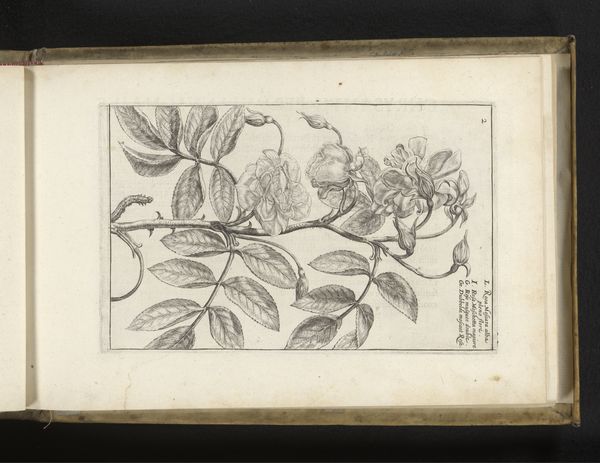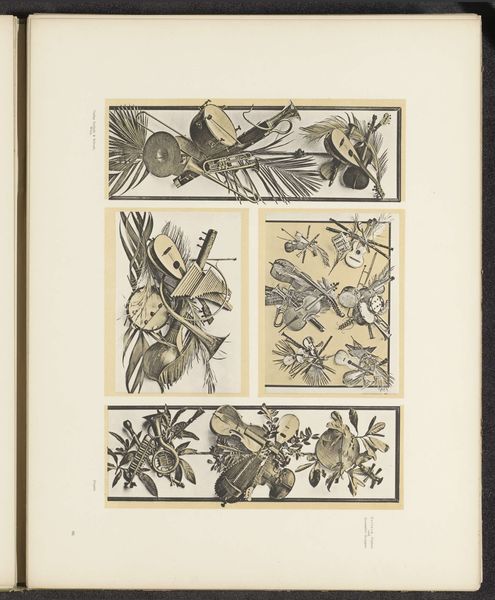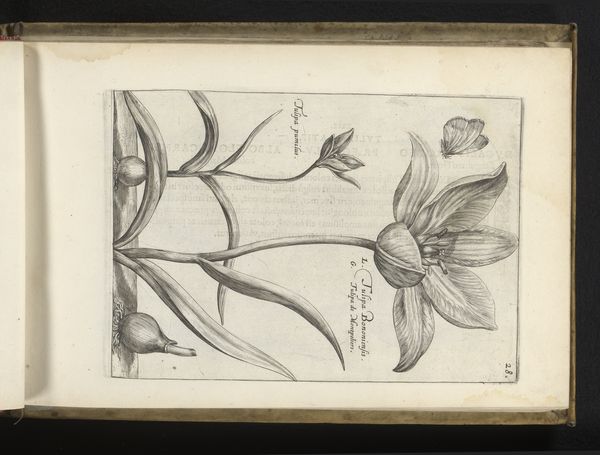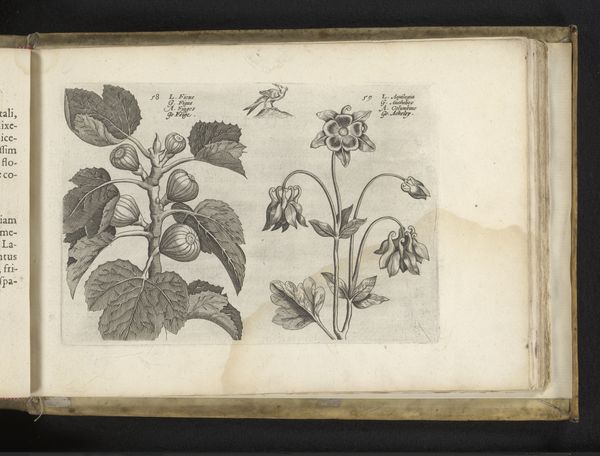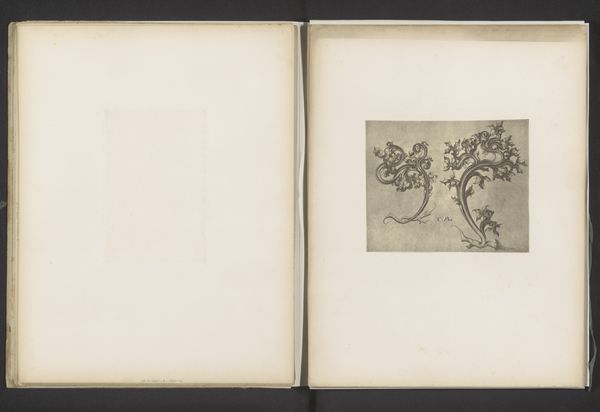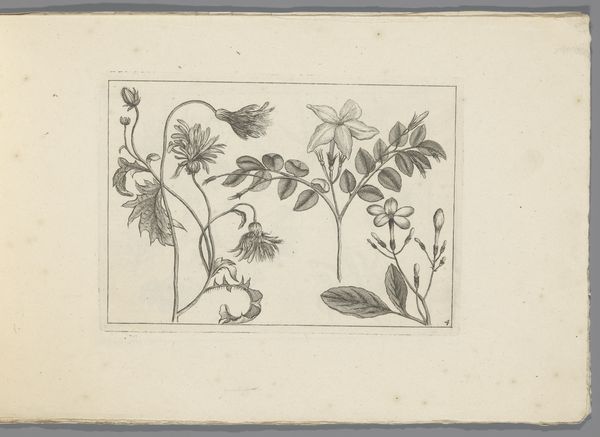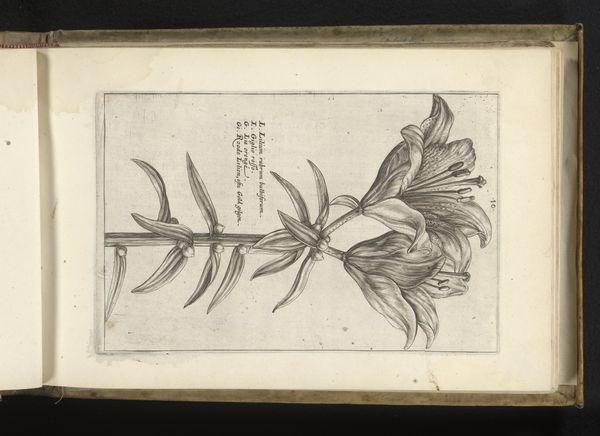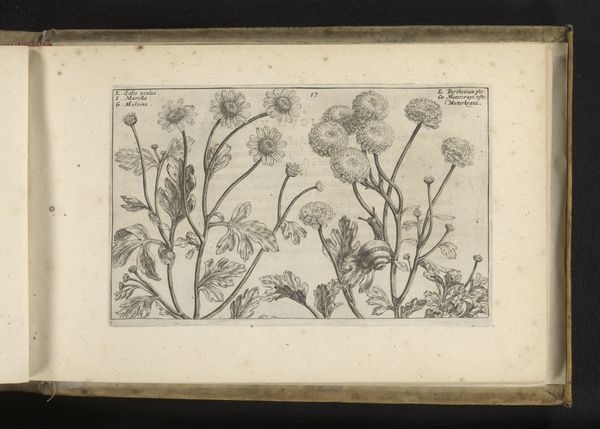
drawing, paper, ink, engraving
#
drawing
#
aged paper
#
toned paper
#
ink paper printed
#
sketch book
#
flower
#
paper
#
11_renaissance
#
personal sketchbook
#
ink
#
pen-ink sketch
#
pen and pencil
#
pen work
#
sketchbook drawing
#
sketchbook art
#
engraving
Dimensions: height 137 mm, width 208 mm
Copyright: Rijks Museum: Open Domain
Editor: So, this is "Clematis," a 1617 drawing by Crispijn van de Passe the Younger, done in ink on paper. It's got this really delicate, almost scientific feel to it, like a botanist's study. What strikes you most about it? Curator: What I find compelling is how this delicate depiction of nature intersects with the socio-political context of its time. The 17th century was an age of exploration and colonialism. Botanical drawings like these weren’t just objective studies; they were part of a larger project of cataloging and controlling the natural world. Consider how such imagery participated in constructing a Eurocentric view of nature, often overshadowing indigenous knowledge. Editor: That's interesting! I hadn't really considered it that way. It just looked like a pretty flower drawing. Curator: Exactly! And that's the brilliance of art; it operates on multiple levels. Look at the precision of the lines, almost clinical, yet there's a clear aesthetic value. What purpose does that duality serve? What audience was it designed for? Were these images also used as part of the commercial drive of the period? How does this intertwine with the global exchange of resources and power? Editor: I guess I always saw "scientific illustration" as just being objective and neutral. Curator: But can anything ever be truly neutral? This drawing speaks volumes about the power dynamics inherent in the act of observing and documenting the natural world. It reveals the artist's hand but also the cultural forces that shaped his perspective and artistic choices. Editor: I see what you mean. I'll definitely look at botanical art differently now. It's a reminder that everything is connected to broader historical and social trends. Curator: Precisely! Art provides the opportunity for that crucial intersectional dialogue.
Comments
No comments
Be the first to comment and join the conversation on the ultimate creative platform.
